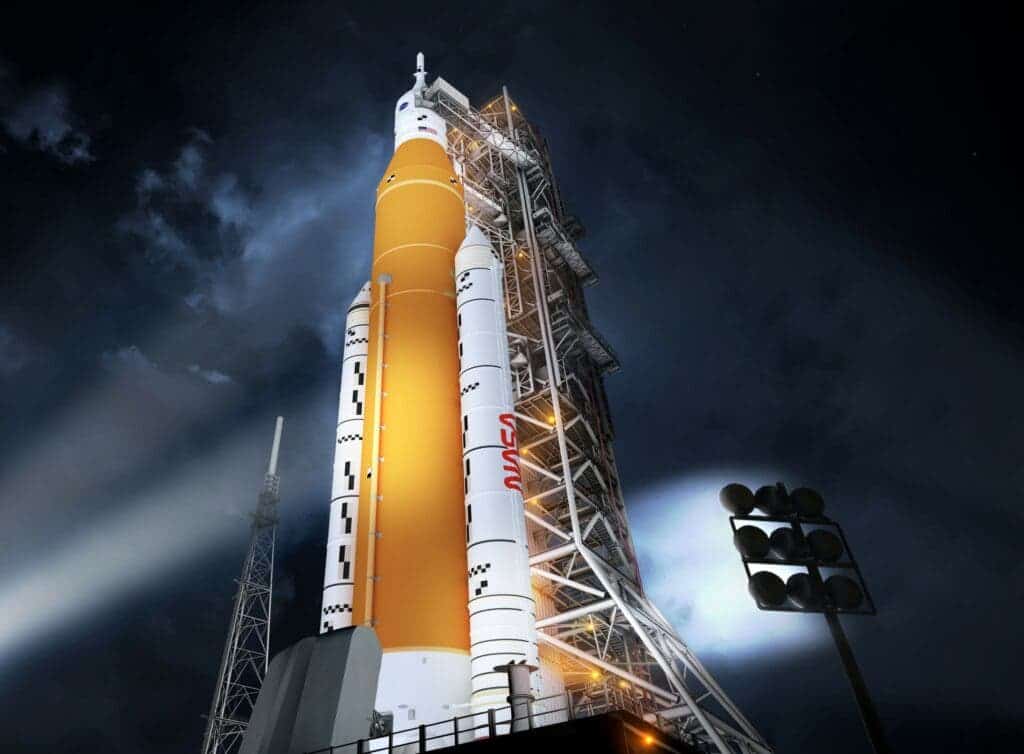Would you like to go to the Moon? Good luck with the physical tests. But even those who have already made it as astronauts will need to wait around a little longer. One “critical test” NASA was running this Sunday has been cut dramatically short by an engine issue, which will likely push back the agency’s schedule for getting people on the Moon again.

The test was meant to ensure that NASA’s massive new rocket, the Space Launch System (SLS) developed for the Artemis mission, would work without a hitch. Even a failed test is good news, since now we know what needs fixing before sending a crew out towards the void of space.
Space setback
Artemis is NASA’s upcoming mission to send humans back to the Moon for the first time since the ’70s. Development of the SLS took up the lion’s share of the mission budget, roughly US$18 billion (out of a total of 30 billion). The issue lies with the SLS’s core stage, the largest piece of the rocket and a lynchpin in its role.
The SLS was assembled and heavily stripped-down (elements that weren’t being tested were removed) on Saturday at the Stennis Space Centre in Bay St. Louis, Mississippi, for a “hot fire” test. This consisted of firing all four of the rocket’s RS-25 engines, exactly as it would do during launch. Sadly, not all went well: these engines were supposed to work for eight minutes straight, but flight control had to turn them off one minute into the test.
According to a statement from NASA, controllers saw “a flash” forming next to the thermal-protection blanket of engine four. Shortly after, they logged an MCF, or “major component failure” and stopped the test.
The SLS’s core stage is the largest and most powerful rocket stage ever built into a rocket, according to NASA. It can hold up to 2 million (around 540,000 gallons) liters of liquid hydrogen fuel and 742,000 liters (around 195,000 gallons) of liquid oxygen (this allows the fuel to burn), alongside a suite of avionic and other subsystems that allow flight. Boeing is the lead contractor for the stage, while Aerojet Rocketdyne supplied its RS-25 engines. These engines are tried and tested on NASA’s fleet of space shuttles.
NASA is currently working on finding out what happened on Sunday, but at least everything turned on without incident, which isn’t that bad of an outcome. In a press conference after the test — which started at around 5:27 pm EST — SA Administrator Jim Bridenstine described the event as feeling “like an earthquake”.
“It was a magnificent moment. And it just brought joy that after all this time, now we’ve got a rocket,” he adds. “The only rocket on the face of the planet capable of taking humans to the moon was firing all four RS-25 engines at the same time.”
Bridenstine explains that the test was “not a failure”. Such failures are part of life, but noticing them early can help us prevent loss of life and ensure that our astronauts get where they’re needed. Still, the results mean more work is needed to iron out these kinks, which could push the current schedule of the Artemis mission back.
“At the time that they made the call [to shut the test down] we did still have four good engines up and running at 109 percent,” John Honeycutt, the SLS program manager at NASA’s Marshall Space Flight Centre, said in the press conference.
NASA also recorded the whole test and braodcasted it live. You can see it here:
a









